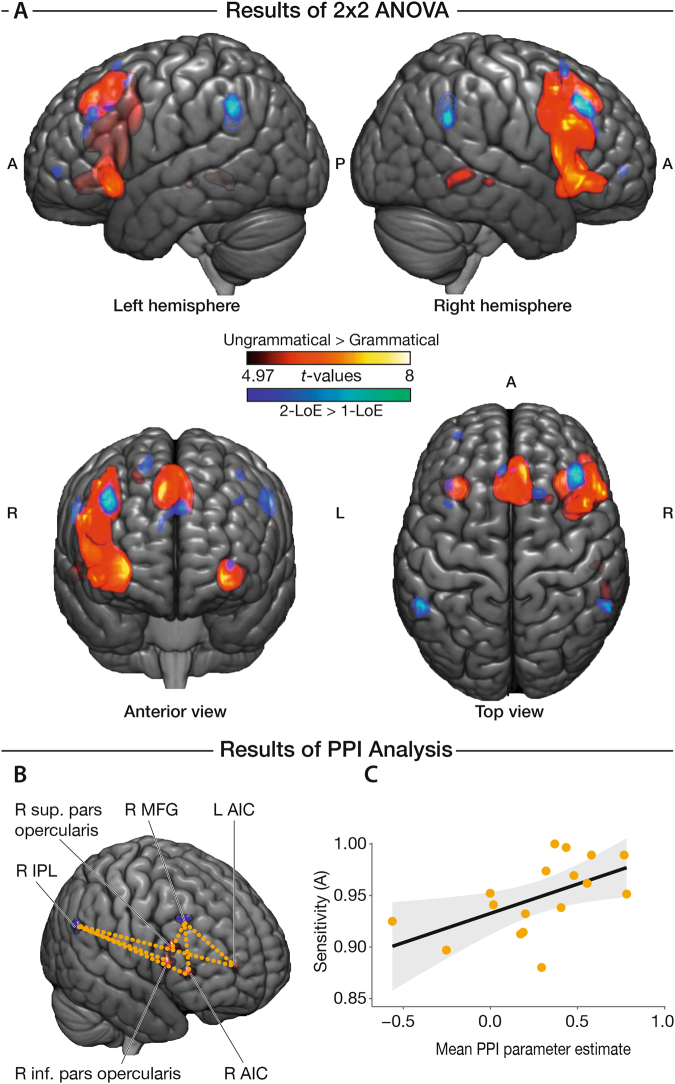Figure 3.
(A) Whole-brain activations for main effects of grammaticality and level of embedding (LoE) on discriminating the grammaticality of nested musical sequences. The contrast UNGRAMMATICAL > GRAMAMTICAL yielded significant clusters (red) in the right inferior frontal gyrus, right middle frontal gyrus, bilateral anterior insular cortices, the pre-supplementary motor area, and the right posterior middle temporal gyrus. Contrasting sequences with TWO-LoE > ONE-LoE yielded significant clusters (blue) bilaterally in the middle frontal gyrus and inferior parietal lobule. Reported clusters were corrected for multiple comparisons voxel-wise at a threshold of p < 0.05 and an extent of 4 voxels. (B) PPI analysis on significant clusters of the refined model where ungrammatical sequences only included non-local category violations. Using the refined model, activity was observed in the right pars opercularis, right pars triangularis, and bilateral anterior insular cortices for the contrast UNGRAMMATICAL > GRAMAMTICAL (seed regions in red), and the right middle frontal gyrus and right inferior parietal lobule for the contrast TWO-LoE > ONE-LoE (seed regions in blue). Dotted lines indicate significantly-increased functional connectivity between seed regions of significant clusters in the experimental context of UNGRAMMATICAL sequences compared to GRAMMATICAL. Results were corrected for multiple comparisons voxel-wise at a threshold of p < 0.05 and an extent of 4 voxels. (C) Positive correlation between sensitivity in discriminating the grammaticality of nested musical sequences and increase in task modulated functional connectivity (r = 0.55, p = 0.03, 1-tailed test; corrected). Shaded region is the 95% confidence band of the linear regression line.

